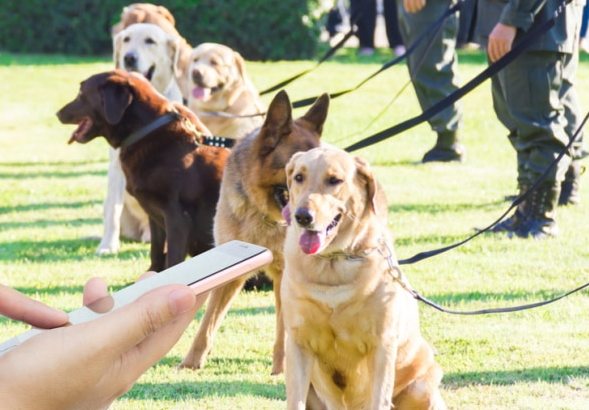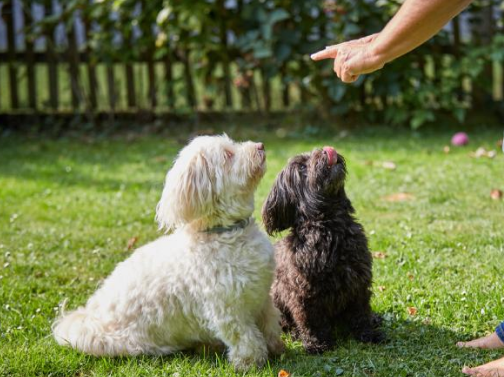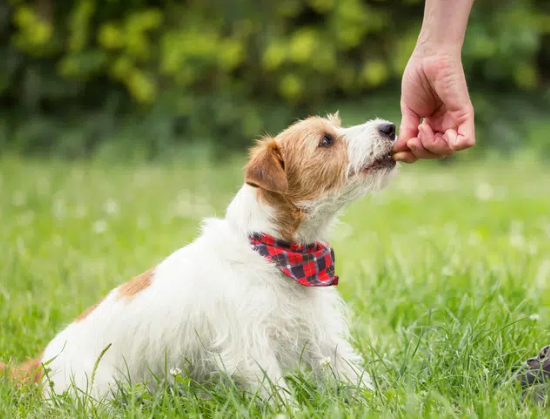The Big Question: DIY Training vs. Pro Help
So, you’ve got a new furry family member—congrats! But now comes the real challenge: Should you train your pup yourself or call in the pros? Let’s break it down like you’re chatting with a dog-loving friend over coffee.

DIY Dog Training: When It Works (and When It Doesn’t)
Pros:
- Bonding Bonanza
Training your dog yourself isn’t just about teaching commands—it’s about building trust. Those daily 15-minute sessions? They’re golden opportunities to become your pup’s favorite human. Think of it as teamwork with treats! - Wallet-Friendly Wins
Let’s face it: Professional trainers aren’t cheap. DIY training saves you cash for more important things—like that fancy chew toy your dog’s been eyeing. Plus, free online resources (hello, YouTube tutorials!) make it easier than ever to learn basics like “sit” and “stay”. - Flex Your Schedule
Night owl? Early bird? No problem! DIY training lets you work around your schedule. Sneak in a quick session during lunch breaks or while binge-watching Netflix.
Cons:
- Time Sink Alert
Training a stubborn Beagle to “drop it” might feel like teaching calculus to a toddler. Without experience, you could spend weeks stuck on one command. - Consistency Chaos
Missed sessions or mixed signals? Dogs thrive on routine. If you’re inconsistent, your pup might end up confused—like thinking “come” means “chase squirrels instead!” - Frustration Factor
Ever tried teaching a hyperactive Husky to heel? Without know-how, you might both end up stressed. (Hint: High-value treats like hot dogs can be game-changers.)

Hiring a Pro: What You’re Really Paying For
Pros:
- Expert Hacks for Tough Cases
Got a German Shepherd that barks at skateboards? Pros use science-backed methods like desensitization and counter-conditioning to tackle fear-based behaviors. - Time Saver Supreme
Pros can teach a “reliable recall” in weeks—something that might take months solo. They’re like doggy tutors with PhDs in patience. - Custom Fixes
Aggression? Separation anxiety? Trainers create tailored plans. For example, they might use long leashes for reactive dogs to practice calmness around triggers.
Cons:
- Cost Crunch
Group classes: $100–$300. Private sessions: $800–$2,500+. Ouch. But think of it as investing in your sanity (and your shoes’ survival). - Control Trade-Off
Some trainers use tools like prong collars—which not all owners love. Always ask about their methods upfront! - Dependency Risk
Relying too much on a pro? You might miss out on bonding moments. Balance is key: Learn their tricks, then practice together.
Vet-Approved Tips to Avoid Common Mistakes
- Skip the Scolding
Yelling at a barking dog? That’s like adding fuel to a fire. Instead, redirect their energy. Try a “look at me” command paired with chicken bits. - Treats ≠ Bribes
Use high-value rewards strategically. Cheese for “stay,” kibble for “sit.” Gradually phase out treats as they master commands. - Socialization ≠ Dog Parks
Puppies need exposure—but rushing into crowded areas can backfire. Start with quiet streets, then slowly introduce busier spots. - Watch for Burnout
Training sessions longer than 15 minutes? Even Border Collies get bored. Keep it short, sweet, and fun.
When to Definitely Hire a Pro
- Aggression Issues: Growling at guests? Don’t DIY this—safety first!
- Severe Anxiety: Pacing, destruction, or excessive barking? Meds + training might be needed.
- Service Dog Goals: Complex tasks like alerting to seizures require expert guidance.
Final Word
There’s no one-size-fits-all answer. Maybe you’ll teach basic commands at home but hire a pro for leash reactivity. Or perhaps you’ll join a group class for socialization. Whatever you choose, remember: Every “good boy!” and belly rub strengthens your bond.
Need Help Deciding?
- Download free checklists: “Is My Dog Ready for Pro Training?”
- Try a hybrid approach: Use apps like GoDog for basics, then consult a trainer for advanced issues.
Now grab those treats and get started—your future well-behaved pup thanks you! 🐾


